
- Home
- Photography Tours
- Diary / Blog
- Galleries
- Foreign Trips
- Tasmania 2016
- NE Queensland 2016
- Western Alps 2016
- NE Spain 2016
- Australia's Wet Tropics 2015
- Australia's Top End 2015
- SW Australia 2015
- Switzerland 2015
- Andalucia 2015
- Belize 2015
- Australia 2014
- Switzerland 2014
- Belize 2014
- Bahama Islands 2014
- Switzerland 2013
- Ecuador 2012-2013
- Florida 2011-2012
- Vancouver Island 2011
- Australia 2010
- Peru 2008
- Bulgaria 2007
- Lesvos 2006
- California 2006
- New Zealand 2005
- Extremadura 2005
- Goa, India 2004
- The Gambia 2003
- About
October 2014
2nd-6th October 2014
Gluepot, South Australia
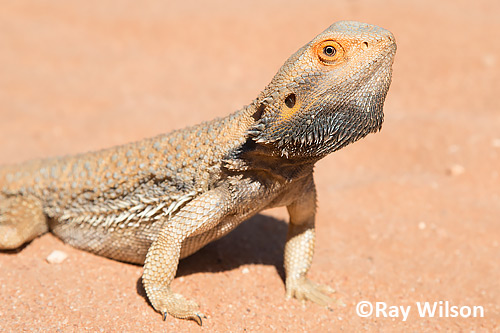
Eastern Bearded Dragon (Pogona barbata)
Gluepot reserve, owned and managed by Birdlife Australia, forms part of the largest remaining intact tract of Mallee scrub in Australia and is home to several endangered species. Although you have to traverse a 65km stretch of dirt road to access the reserve, the road is very well maintained and is easily accessible in conventional vehicles when the road is dry.
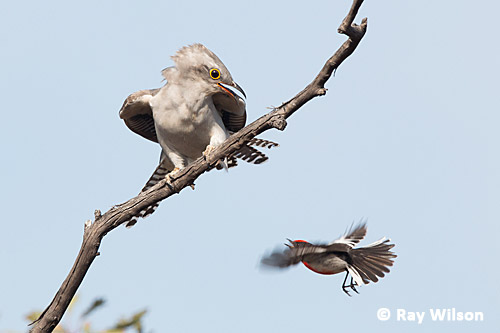
Pallid Cuckoo (Cuculus pallidus) being mobbed by a male Red-capped Robin (Petroica goodenovii)
Due to the arid nature of mallee scrub, birds are pretty well spread out and it is not all that easy to find them when walking the extensive system of trails in the reserve. One trail that I found to be pretty productive was the Oil Line Trail, a 14km walk if you do the full loop, and it was here that I was able to track down a calling Pallid Cuckoo. I wasn't the only one that was attracted to its call, however, and pretty soon it was being mobbed by a small group of irate Red-capped Robins, one of the species that Pallid Cuckoo parasitizes.
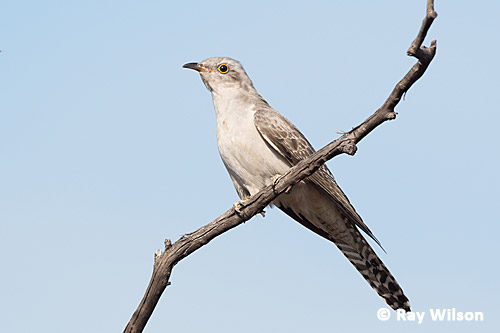
Pallid Cuckoo (Cuculus pallidus)
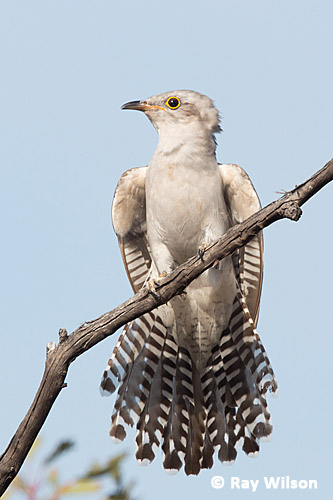
Pallid Cuckoo (Cuculus pallidus)
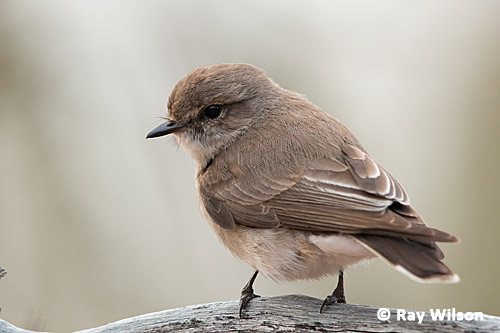
Jacky Winter (Microeca fascinans)
Jacky Winter is fairly common throughout the reserve and often follows you around to prey on any insects you disturb as you walk along the trails.
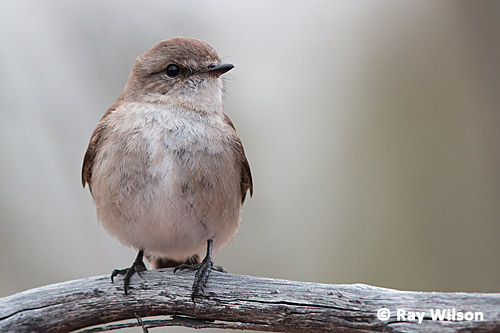
Jacky Winter (Microeca fascinans)
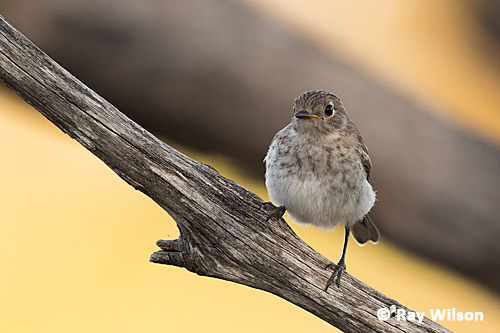
immature Red-capped Robin (Petroica goodenovii)
The best way to get good photos of a decent selection of the birds present on the reserve is by making use of the 5 hides set up in front of artificial water sources. There is usually activity here throughout the day but they are especially productive in the late afternoon when many species come down for a drink and a bath before going to roost for the night.
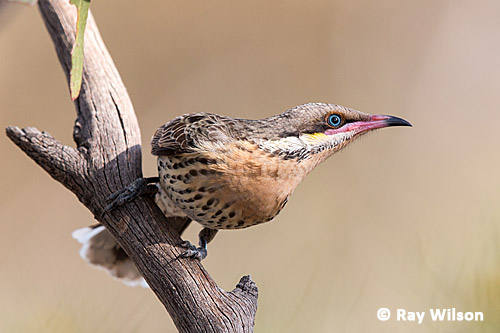
Spiny-cheeked Honeyeater (Acanthagenys rufogularis)
Spiny-cheeked Honeyeater is one of the most common birds on the reserve and you are almost guaranteed to see at least one within 10 minutes of arriving at any one of the 5 hides.
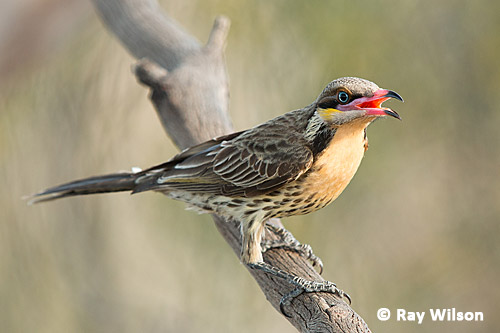
Spiny-cheeked Honeyeater (Acanthagenys rufogularis)
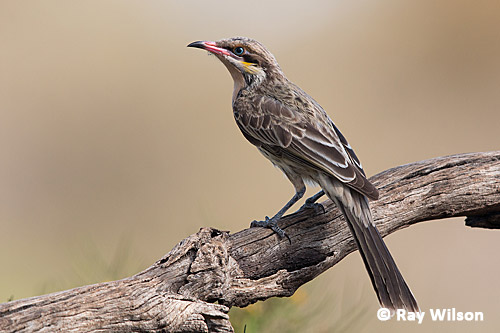
Spiny-cheeked Honeyeater (Acanthagenys rufogularis)
Its larger cousin, the Red-wattled Honeyeater is also pretty regular from most of the hides.
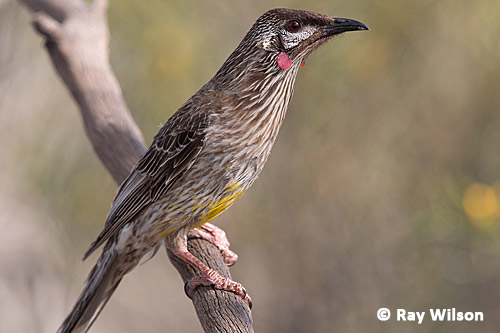
Red-wattled Honeyeater (Anthochaera carunculata)
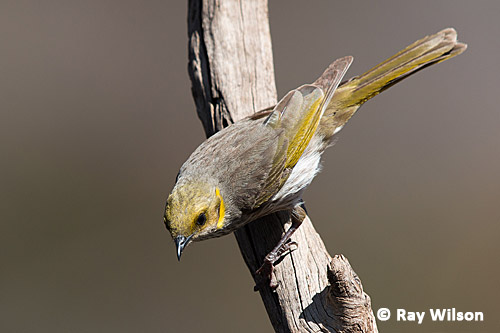
Yellow-plumed Honeyeater (Lichenostomus ornatus)
The commonest birds to visit the water troughs, however, are Yellow-plumed and Brown-headed Honeyeaters who out-numbered all other species by at least two-to-one.
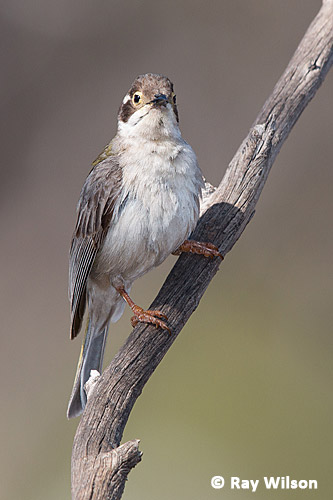
Brown-headed Honeyeater (Melithreptus brevirostris) |
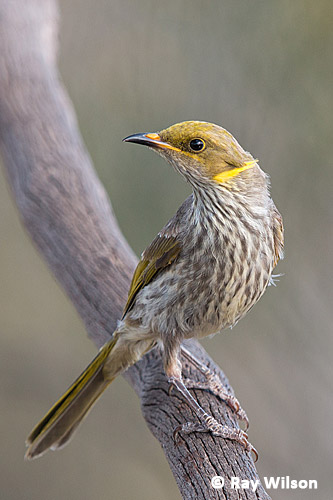
Yellow-plumed Honeyeater (Lichenostomus ornatus) |
Other species occasionally seen in front of the hides included Variegated Fairywren, Common Bronzewing, Galah and Collared Sparrowhawk.
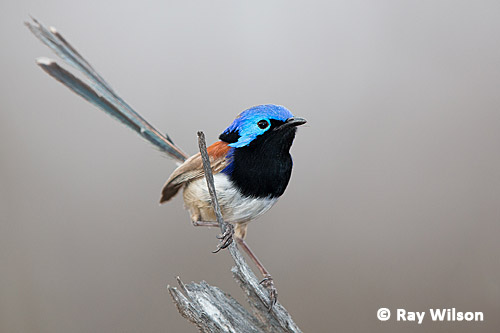
Variegated Fairywren (Malurus lamberti)
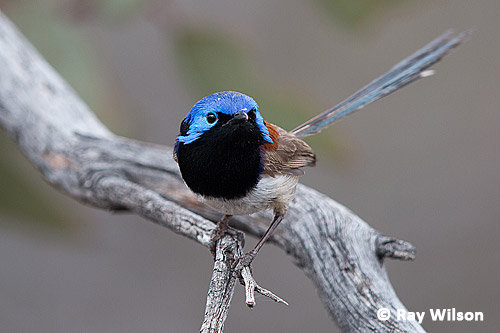
Variegated Fairywren (Malurus lamberti)
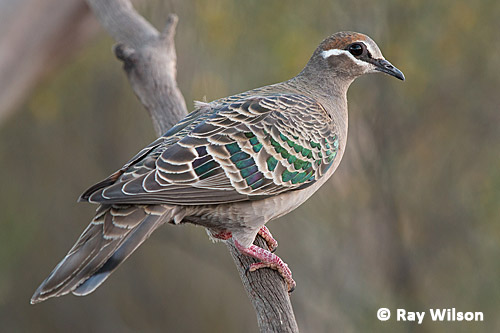
Common Bronzewing (Phaps chalcoptera)
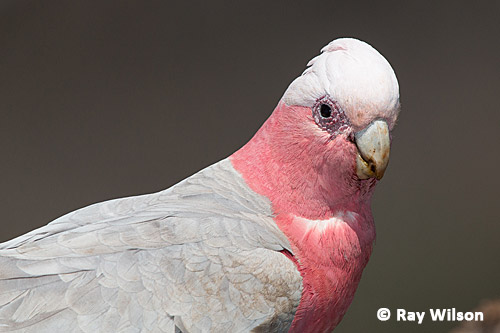
Galah (Eolophus roseicapillus)
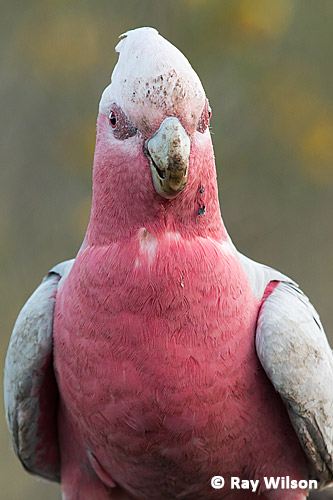 |
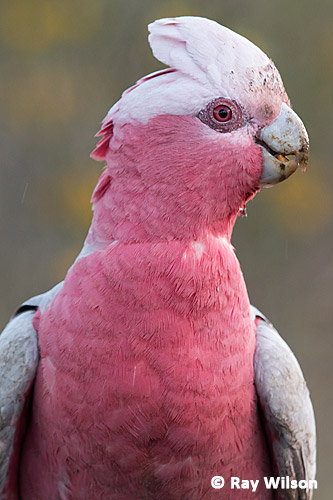 |
Galah (Eolophus roseicapillus)
The Little Friarbird shown below left was a very unexpected visitor to the Grasswren Hide. This species is a rare vagrant to the Gluepot reserve and has only previously been recorded there a handful of times.
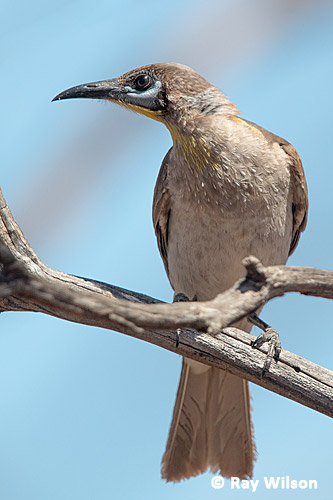
Little Friarbird (Philemon citreogularis) |
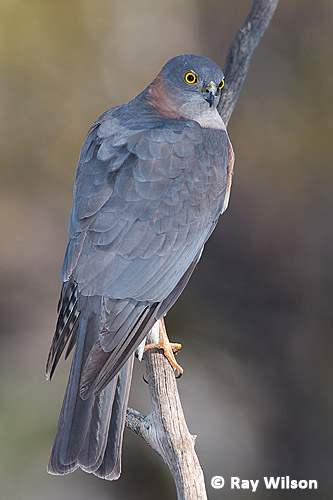
Collared Sparrowhawk (Accipiter cirrhocephalus) |
I found the old airstrip trail quite productive in the early mornings as there was quite a lot of shrubs and trees (mainly acacias and eucalypts) in flower in this area.
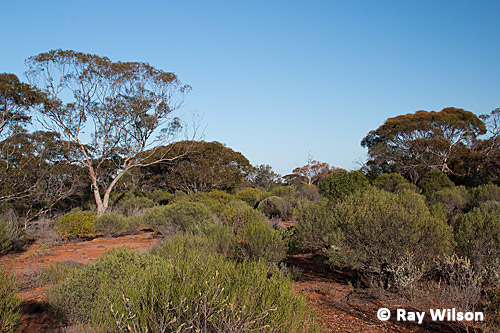
Malee scrub at the old airfield
White-fronted Honeyeaters, a species I didn't see visiting the hides, were common here although they weren't particularly approachable and it took a lot of persistance to get decent photos.
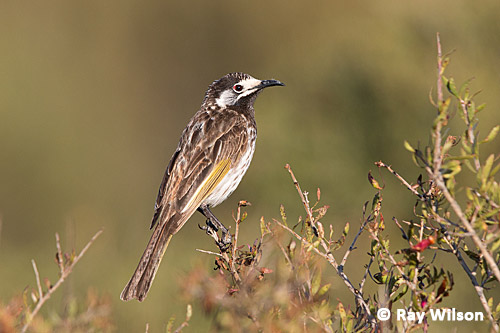
White-fronted Honeyeater (Phylidonyris albifrons)
The best birds I found at the old airstrip, however, were a small family group of White-winged Fairywrens, although it unfortunately appeared the males were in eclipse plumage as all the birds were in female-type plumage.
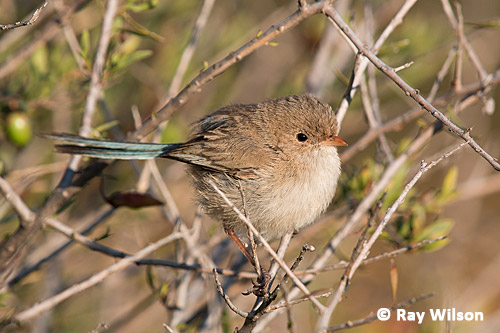
White-winged Fairywren (Malurus leucopterus)
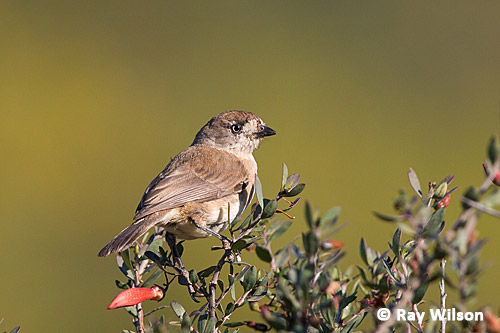
Southern Whiteface (Aphelocephala leucopsis)
A small group of Southern Whitefaces were another highlight one morning, with the supporting cast including numerous Chestnut-rumped Thornbills, a tiny, hyperactive, little bird that rarely sits still for more than a couple of seconds.
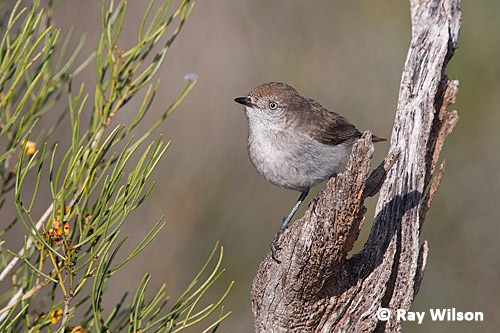
Chestnut-rumped Thornbill (Acanthiza uropygialis)
White-browed Woodswallows were fairly numerous in some parts of the reserve, particularly along the oil line track.
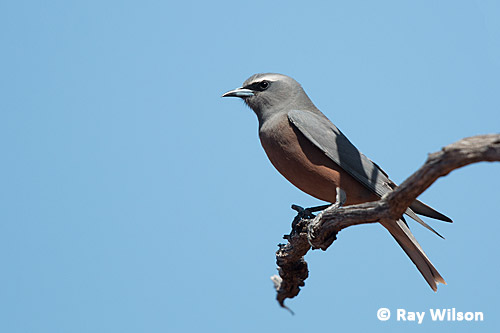
White-browed Woodswallow (Artamus superciliosus)
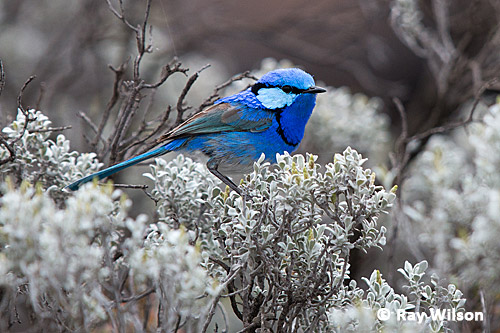
Splendid Fairywren (Malurus splendens)
Splendid Fairywrens were reasonably common but tended to be a lot more secretive than the other fairywrens, and it was usually only a flash of vivid blue seen out of the corner of my eye that alerted me to their presence as they skulked among the dense vegetation.
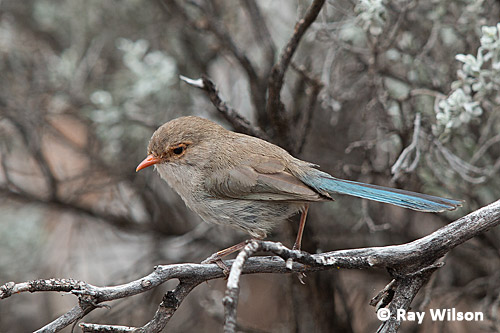
Splendid Fairywren (Malurus splendens)
As with most hot, arid places, reptiles were pretty numerous and although I failed miserably in my attempts to photograph the commonest lizard on the reserve, the Mallee Dragon, I did manage to capture photos of a few of the other species present (see also the photo of Eastern Bearded Dragon at the top of the page).
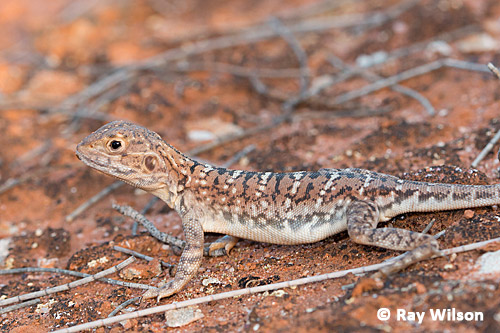
Painted Dragon (Ctenophorus pictus)
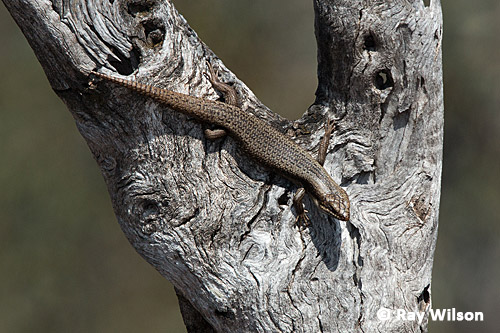
Tree Skink (Egernia striolata)
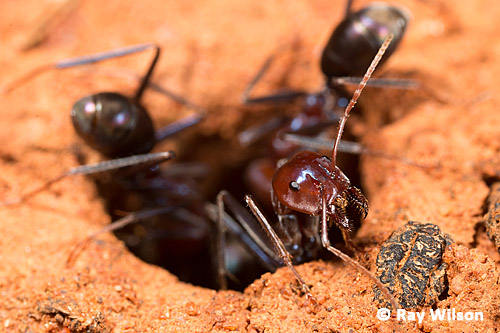
unidentifed ant sp. (Formicidae)
| 30th Sept. - 1st Oct. (Bool Lagoon, SA, Australia) | 2014 index | 8th-9th October (Alice Springs, NT, Australia) |
Ray Wilson owns the copyright of all images on this site.
They may not be used or copied in any form without prior written permission.
raywilsonphotography@googlemail.com